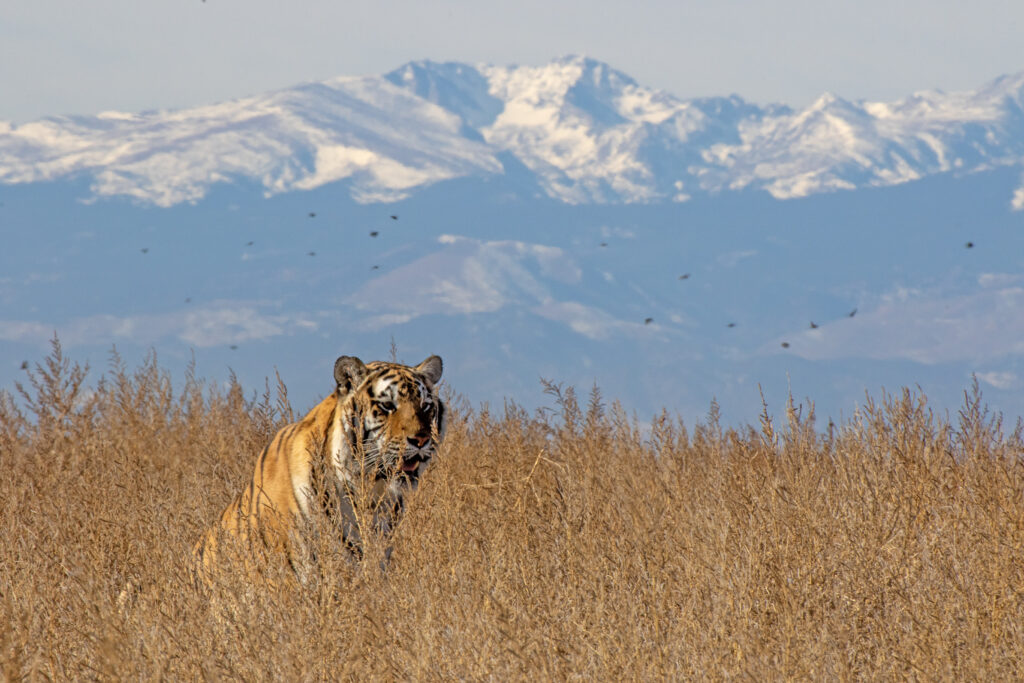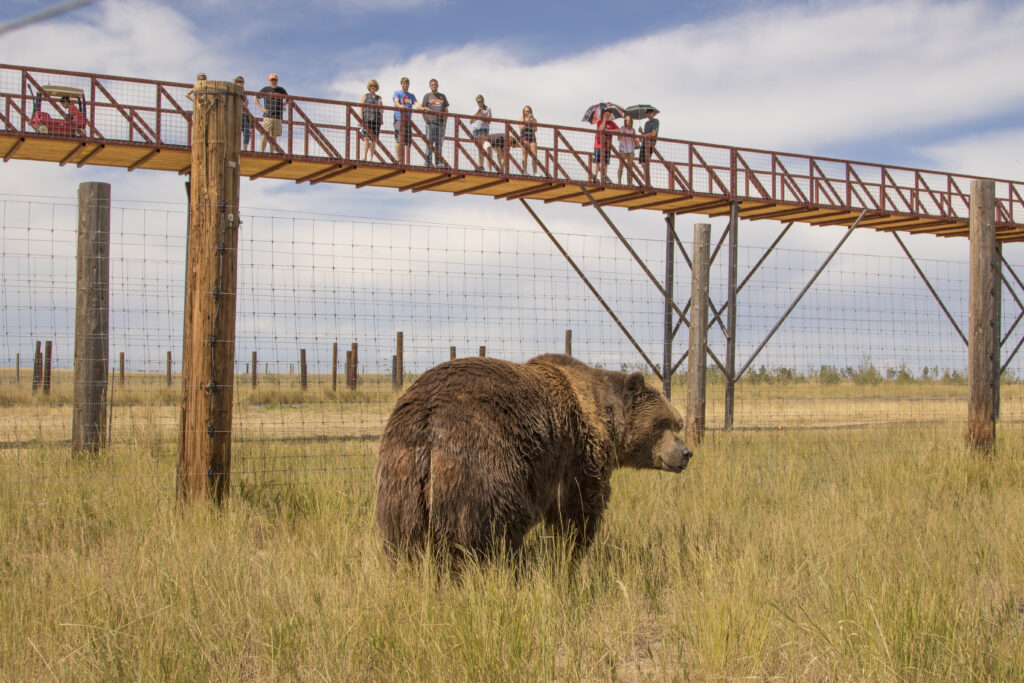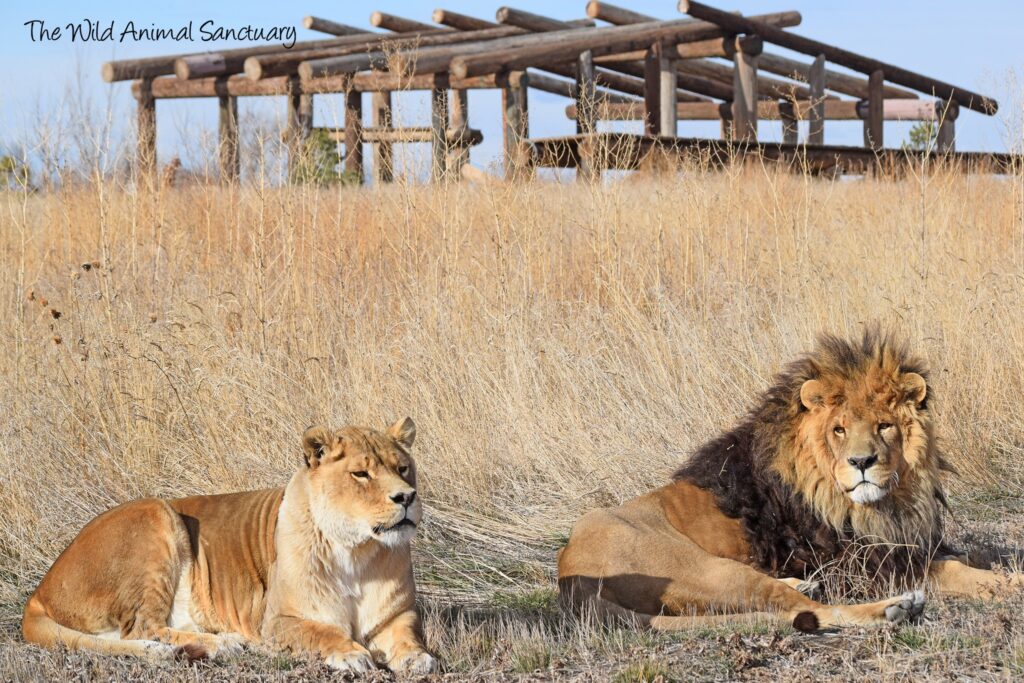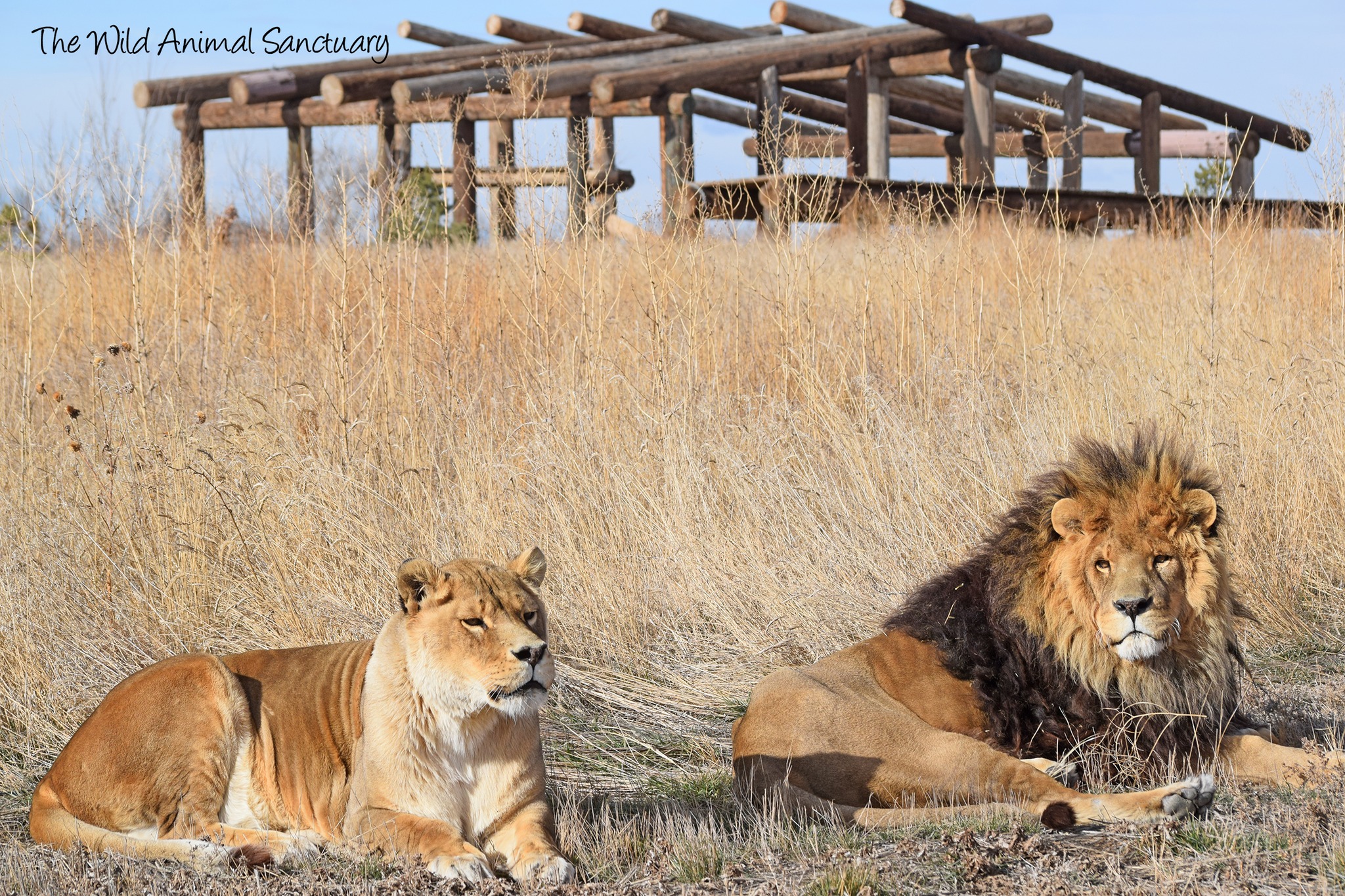Have you ever wanted to watch a lion soaking up the sun or see a bear enjoying a snack? At The Wild Animal Sanctuary in Keenesburg, Colorado, these incredible animals live in wide-open spaces, free to explore and relax. Unlike a zoo, this sanctuary gives rescued animals a forever home where they can roam, play, and be cared for by experts.
Recently, K-12 grade students got an inside look at this remarkable place through a K12 virtual field trip. Children learned about some of the sanctuary’s largest animals such as lions, tigers, bears, and wolves! We also heard stories of animal rescues and discovered what makes this sanctuary so special.
If you missed it, don’t worry! You can watch the recording here.
What Makes the Wild Animal Sanctuary Special?
The Wild Animal Sanctuary is one of the largest carnivore sanctuaries in the world, providing homes for around 750 rescued animals in over 120 habitats. The Sanctuary rescues animals in need from all over the world. Recently, they have rescued 11 lions from Ukraine and 22 Moon Bears from South Korea. These animals were once kept in places not meant for them, but now they have space, safety, and expert care.

A Home for Big Animals
Some of the wild animals living at the sanctuary include:
- African Lions – The Sanctuary cares for about 70 African lions that were rescued from unsafe situations.
- Tigers – The Sanctuary is home to about 85 tigers, including a white tiger called Simon, and a bonded pair called Grumpy & Louise.
- Bears – About 156 Black Bears and more than 43 Grizzly Bears now call The Sanctuary home.
- Leopards -There are about 5 leopards in care at The Sanctuary, including a Black Leopard called Jumanji, and Kiro who was rescued from Mexico.
- Wolves – The Sanctuary cares for about 37 wolves rescued from unsafe situations. Including a bonded paid called Aztec & Fidget, and Kiko who was once acquired as a family pet.
Each animal has a huge habitat, giving them the freedom to explore and relax just like they would in nature. Instead of being in small cages, they now have acres of land to call home.
A Unique Way to See the Animals
Instead of walking on pathways like a regular zoo, visitors explore the sanctuary from above on the ‘Mile Into The Wild’ Walkway. This raised walkway spans over 1.5 miles above animal habitats and allows people to see the animals without disturbing them.
The walkway keeps the animals’ world peaceful, while visitors get a once-in-a-lifetime view of these special animals.
The sanctuary is designed to put the animals first. Each habitat is built to give them as much space as possible, so they can act just like they would in the wild.

A Legacy of Rescue
Founded in 1980 by Pat Craig, The Wild Animal Sanctuary is one of the world’s oldest and largest nonprofit sanctuaries dedicated to rescuing captive exotic and endangered large carnivores. It began on Craig’s family farm outside Boulder, Colorado, but quickly outgrew the space as the need for rescue efforts expanded. The sanctuary then relocated to Lyons, Colorado, before finally moving to its current home in Keenesburg.
The Wild Animal Sanctuary operates three facilities: The Wild Animal Sanctuary in Keenesburg, Colorado, The Wild Animal Refuge in Springfield, Colorado, and The Wild Horse Refuge in Craig, Colorado, which is dedicated to saving Colorado Mustangs.
Today, The Wild Animal Sanctuary spans 1,214 acres and provides lifelong care for more than 750 rescued animals. In 2001, the sanctuary opened to the public, constructing the ‘Mile Into The Wild’ Walkway and observation deck to educate visitors about the captive wildlife crisis, raising awareness of the thousands of animals living in unsafe conditions across the country.
Through decades of dedication, The Wild Animal Sanctuary has continued its mission to rescue, rehabilitate, and provide a peaceful, natural home for animals in need.
How You Can Be a Wildlife Hero
Even if you can’t visit the sanctuary in person, there are many ways to make a difference! Keep reading to learn how you can help.
Watch, Learn, and Share
- Watch the K12 virtual field trip “Journey to the Wild Animal Sanctuary”. Learning about these animals and their stories is a great way to understand the importance of wildlife conservation. If you haven’t watched yet, check out the recording here!
- Visit the sanctuary’s website to learn about some of the animals and how they arrived at their new home. Their stories show why places like this are so important.
- Tell your family and friends about The Wild Animal Sanctuary and its mission. The more people who know about TWAS the more support it gets. Share what you’ve learned with classmates, teachers, and family members.
Get Creative
- If you love art, writing, or creating videos, consider making a poster, essay, or short video about animal sanctuaries. Social media is a great place to spread the word!
Help Protect Animals in Everyday Life
- Be Kind to Animals – Showing kindness makes the world better for all creatures.
- Respect Wildlife – If you ever see an animal in nature, watch from a distance and never feed wild animals. Feeding them can make them dependent on humans, which can be dangerous for them.
- Avoid Places That Harm Animals – Sadly, not all animal attractions are good for wildlife. Some places keep animals in small cages or make them perform for entertainment. When visiting zoos or wildlife centers, choose places that put the animals first, just like The Wild Animal Sanctuary does.
Support The Wild Animal Sanctuary
- Donate to Their Mission – Sanctuaries rely on donations to care for the animals, provide food, and expand their habitats. Even small donations can help!
- Adopt an Animal – At TWAS, you can symbolically adopt an animal by donating to their care. You don’t take the animal home, but you help provide food and medical care.
- Shop for a Cause – Check out their online store for apparel, jewelry, stationary, and other fun items that support the sanctuary.
- Volunteer & Get Involved – Older children and adults can sometimes volunteer at wildlife sanctuaries. If you’re interested in volunteering at The Wild Animal Sanctuary, check out opportunities on their website here.
For even more ways to help, visit The Wild Animal Sanctuary’s Ways to Help page here!

A Sanctuary Like No Other
The Wild Animal Sanctuary is a one-of-a-kind place, giving rescued animals the life they deserve. Thanks to an exciting K12 virtual field trip with TWAS, students got to experience it up close and learn more about the pressing issue of the Captive Wildlife Crisis. Through this virtual field trip, they discovered how rescued animals are given a second chance at life, the importance of conservation, and how sanctuaries like TWAS provide lifelong care.
Every effort counts when it comes to protecting wildlife, from learning and sharing to taking action. If you haven’t watched the virtual field trip yet, now’s the perfect time to press play and experience it for yourself!




